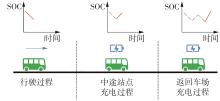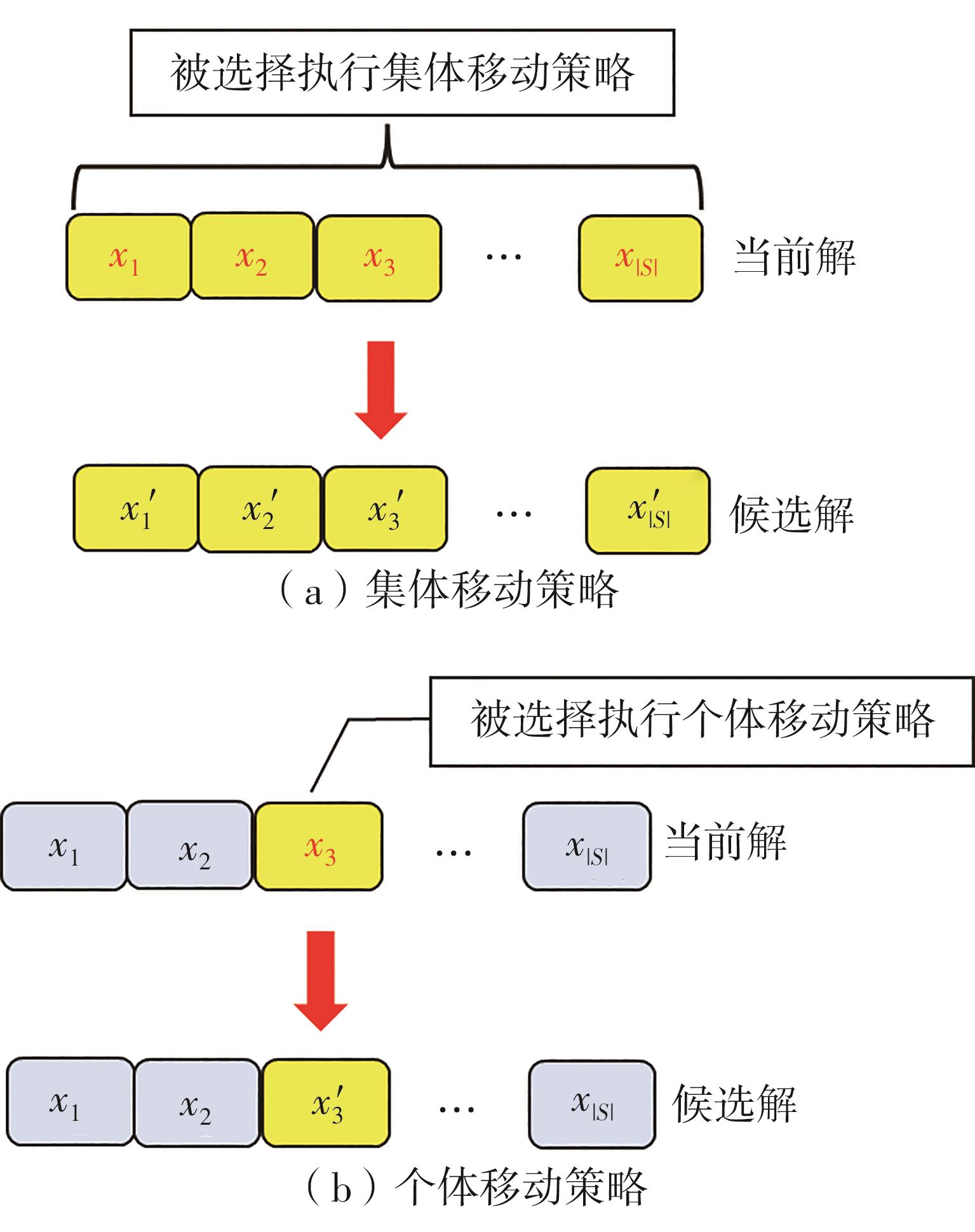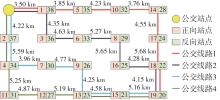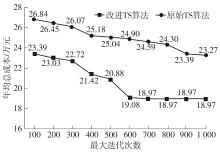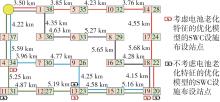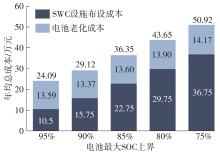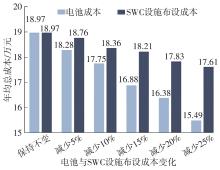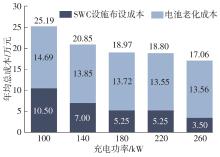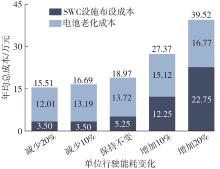| 1 |
曲小波,刘亚君,陈雨薇,等 .城市电动公交车辆运营管理:综述与展望[J].汽车安全与节能学报,2022,13(3):407-420.
|
|
QU Xiaobo, LIU Yajun, CHEN Yuwei,et al .Urban electric bus operation management:review and outlook[J].Journal of Automotive Safety and Energy,2022,13(3):407-420.
|
| 2 |
LAJUNEN A .Lifecycle costs and charging requirements of electric buses with different charging methods[J].Journal of Cleaner Production,2018,172:56-67.
|
| 3 |
WANG J, KANG L, LIU Y .Optimal scheduling for electric bus fleets based on dynamic programming approach by considering battery capacity fade[J].Renewable and Sustainable Energy Reviews,2020,130:109978/1-13.
|
| 4 |
徐桂芝,李晨曦,赵军,等 .电动汽车无线充电电磁环境安全性研究[J].电工技术学报,2017,32(22):152-157.
|
|
XU Guizhi, LI Chenxi, ZHAO Jun,et al .Electromagnetic environment safety study of wireless electric vehicle charging[J].Transactions of China Electrotechnical Society,2017,32(22):152-157.
|
| 5 |
BI Z, KLEINE R, KEOLEIAN G .Integrated life cycle assessment and life cycle cost model for comparing plug-in versus wireless charging for an electric bus system[J].Journal of Industrial Ecology,2017,21(2):344-355.
|
| 6 |
ZHANG Y, ZHAO Z .Frequency splitting analysis of two-coil resonant wireless power transfer[J].IEEE Antennas and Wireless Propagation Letters,2014,13:400-402.
|
| 7 |
CHEN G, HU D, CHIEN S .Optimizing battery-electric-feeder service and wireless charging locations with nested genetic algorithm[J].IEEE Access,2020,8:67166-67178.
|
| 8 |
CHEN G, HU D, CHIEN S,et al .Optimizing wireless charging locations for battery electric bus transit with a genetic algorithm[J].Sustainability,2020,12(21):8971/1-20.
|
| 9 |
LIU Z, SONG Z, HE Y .Optimal deployment of dynamic wireless charging facilities for an electric bus system[J].Transportation Research Record,2017,2647(1):100-108.
|
| 10 |
ALWESABI Y, LIU Z, KWON S .A novel integration of scheduling and dynamic wireless charging planning models of battery electric buses[J].Energy,2021,230:120806/1-14.
|
| 11 |
LIU Z, SONG Z .Robust planning of dynamic wireless charging infrastructure for battery electric buses[J].Transportation Research Part C:Emerging Technologies,2017,83:77-103.
|
| 12 |
ALWESABI Y, AVISHAN F, YANIKOGLU I,et al .Robust strategic planning of dynamic wireless charging infrastructure for electric buses[J].Applied Energy,2022,307:118243/1-21.
|
| 13 |
NAHUM O, HADAS Y .Multi-objective optimal allocation of wireless bus charging stations considering costs and the environmental impact[J].Sustainability,2020,12(6):2318/1-20.
|
| 14 |
BAI Z, YANG L, FU C .A robust approach to integrated wireless charging infrastructure design and bus fleet size optimization[J].Computers & Industrial Engineering,2022,168:108046/1-16.
|
| 15 |
别一鸣,郝明杰,王琳虹 .专用道条件下电动公交线路静态无线充电设施布局优化[J].中国公路学报,2023,36(1):202-213.
|
|
BIE Yi-ming, HAO Ming-jie, WANG Lin-hong .Layout optimization of static wireless charging facilities for electric bus routes with dedicated bus lanes[J].China Journal of Highway and Transport,2023,36(1):202-213.
|
| 16 |
WANG X, YUEN C, HASSAN N,et al .Electric vehicle charging station placement for urban public bus systems[J].IEEE Transactions on Intelligent Transportation Systems,2017,18(1):128-139.
|
| 17 |
HE Y, SONG Z, LIU Z .Fast-charging station deployment for battery electric bus system considering electricity demand charges[J].Sustainable Cities & Society,2019,48:101530/1-15.
|
| 18 |
范艳红,杨奕晖,马茜,等 .基于分布式无线充电设备的电动公交车线路规划[J].电气自动化,2020,42(2):16-18.
|
|
FAN Yanhong, YANG Yihui, MA Qian,et al .Electric bus route planning based on distributed wireless charging equipment[J].Electrical Automation,2020,42(2):16-18.
|
| 19 |
WANG Y, LIAO F, LU C .Integrated optimization of charger deployment and fleet scheduling for battery electric buses[J].Transportation Research Part D:Transport and Environment,2022,109:103382/1-18.
|
| 20 |
BI Z, KEOLEIAN G, TULGA E .Wireless charger deployment for an electric bus network:a multi-objective life cycle optimization[J].Applied Energy,2018,225:1090-1101.
|
| 21 |
祝庆伟,吴启超,徐一丹,等 .镍钴铝锂离子电池在不同SOC区间的老化[J].浙江大学学报(工学版),2023,57(4):666-674.
|
|
ZHU Qing-wei, WU Qi-chao, XU Yi-dan,et al .Aging of nickel-cobalt-aluminum lithium-ion battery in different SOC intervals[J].Journal of Zhejiang University (Engineering Science),2023,57(4):666-674.
|
| 22 |
奇格奇,李丹,段梦媛,等 .考虑电动公交在途特性的电池状态梯次划分[J].中国公路学报,2022,35(8):44-54.
|
|
QI Ge-qi, LI Dan, DUAN Meng-yuan,et al .Echelon division of battery status considering on-road characteristics of electric buses[J].China Journal of Highway and Transport,2022,35(8):44-54.
|
| 23 |
刘良,李超,顾延光,等 .电动汽车锂离子电池碳负极扩散应力与微观结构失效机理研究[J].中国公路学报,2022,35(8):79-88.
|
|
LIU Liang, LI Chao, GU Yan-guang,et al .Study of the mechanism of diffusion stress and microstructure failure of carbon anode for lithium-ion batteries[J].China Journal of Highway and Transport,2022,35(8):79-88.
|
| 24 |
OMAR N, MONEM M, FIROUZ Y,et al .Lithium iron phosphate based battery-assessment of the aging parameters and development of cycle life model[J].Applied Energy,2014,113:1575-1585.
|
| 25 |
LAM L, BAUER P .Practical capacity fading model for Li-ion battery cells in electric vehicles[J].IEEE Transactions on Power Electronics,2013,28(12):5910-5918.
|
| 26 |
ZHANG L, ZENG Z, QU X .On the role of battery capacity fading mechanism in the lifecycle cost of electric bus fleet[J].IEEE Transactions on Intelligent Transportation Systems,2021,22(4):2371-2380.
|
| 27 |
ZHANG L, WANG S, QU X .Optimal electric bus fleet scheduling considering battery degradation and non-linear charging profile[J].Transportation Research Part E:Logistics and Transportation Review,2021,154:102445/1-27.
|
| 28 |
宋俪婧,白同舟,贺玉龙,等 .基于混合整数非线性规划的接驳公交优化模型[J].交通运输系统工程与信息,2022,22(3):104-111.
|
|
SONG Li-jing, BAI Tong-zhou, HE Yu-long .Feeder bus routes and frequency optimization based on mixed integer nonlinear programming[J].Journal of Transportation Systems Engineering and Information Tech-nology,2022,22(3):104-111.
|
| 29 |
陈煜婷,张惠珍 .双层级医疗设施选址问题及禁忌搜索算法[J].运筹与管理,2021,30(9):56-63.
|
|
CHEN Yu-ting, ZHANG Hui-zhen .Two-level medical facility location problem and tabu search algorithm[J].Operations Research and Management Science,2021,30(9):56-63.
|
| 30 |
WANG Y, LU C, BI J,et al .Lifecycle cost optimization for electric bus systems with different charging methods:collaborative optimization of infrastructure procurement and fleet scheduling[J].IEEE Transactions on Intelligent Transportation Systems,2023,24(3):2842-2861.
|
| 31 |
BI J, WU Z, WANG L,et al .A Tabu search-based algorithm for airport gate assignment: a case study in Kunming,China[J].Journal of Advanced Transportation,2020,2020:8835201/1-13.
|
| 32 |
雷雨龙,侯博宁,付尧,等 .基于贪心策略的电动车AMT换挡点实时优化方法研究[J].北京理工大学学报,2022,42(8):784-790.
|
|
LEI Yulong, HOU Boning, FU Yao,et al .Research on real-time optimization method of AMT shift point of electric vehicle based on greedy algorithm[J].Transactions of Beijing Institute of Technology,2022,42(8):784-790.
|
| 33 |
NYKVIST B, NILSSON M .Rapidly falling costs of battery packs for electric vehicles[J].Nature Climate Change,2015,5(4):329-332.
|
 ), BI Jun1,2(
), BI Jun1,2( ), XIE Dongfan1, SAI Qiuyue3
), XIE Dongfan1, SAI Qiuyue3
